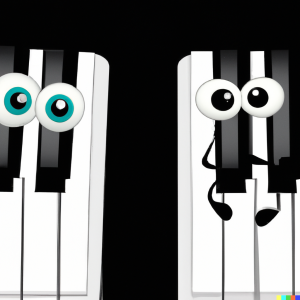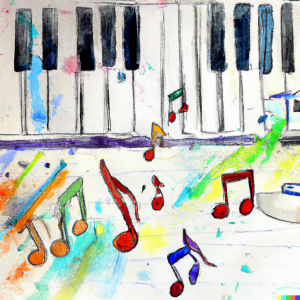Hello Music Explorers and Parents!

Every parent with a budding pianist has likely asked the same pivotal question: “How often should my child practice, and for how long?” It’s a question deeply rooted in a parent’s desire for their child to succeed and develop a lasting relationship with music. Let’s unravel the answer together.
The Importance of Regular Practice
Consistency is a cornerstone of any learning process. Just as daily reading helps in language acquisition or regular exercises improve fitness, consistent piano practice reinforces learning. That said, the key lies not in the sheer number of hours spent but in the quality of that time.
The Magic of Enjoyable Practice
Imagine two scenarios:
- Your child practices for 20 minutes, continuously watching the clock, mechanically repeating the scales, and counting down the minutes until freedom.
- Your child joyfully explores the keyboard for 5 minutes, creatively experimenting with different sounds, and is genuinely excited to discover a new tune.
Which scenario is likely to instill a love for the instrument?
Quality Over Quantity
If your child is truly engaged, even a few minutes can be profoundly productive. Here’s why:
- Focused Learning: Short, dedicated practice sessions can be more effective than longer, distracted ones.
- Boosted Retention: Engaging with the instrument regularly, even for short periods, reinforces memory and muscle learning.
- Increased Enthusiasm: Short, fun-filled sessions can ignite a passion for music that longer, forced sessions might stifle.
Striking the Right Balance
Now, this isn’t to say that longer practice sessions aren’t valuable. As your child progresses and their repertoire grows, they’ll naturally need more time. The key is to strike a balance:
- Start Small: For beginners, especially younger ones, 5-15 minutes of focused daily practice can work wonders. Let them explore and enjoy the process.
- Follow Their Lead: Pay attention to your child’s cues. If they’re engrossed and want to continue beyond their set time, let them. If they’re getting frustrated, it might be time for a short break.
- Mix It Up: Ensure practice sessions include a blend of scales, pieces they know, and new ones. This variety keeps sessions fresh and engaging.
- Celebrate Small Wins: Did they master a tricky scale? Play a piece without mistakes? Celebrate these achievements, no matter how small. It fuels motivation.
In Conclusion
Remember, the goal isn’t just to learn an instrument; it’s to foster a love for music. Your child’s practice sessions should be less about the ticking clock and more about their growing relationship with the piano. As they find joy in their musical journey, the minutes they spend on the bench will naturally increase, driven by passion rather than obligation.
Warmly,AP



